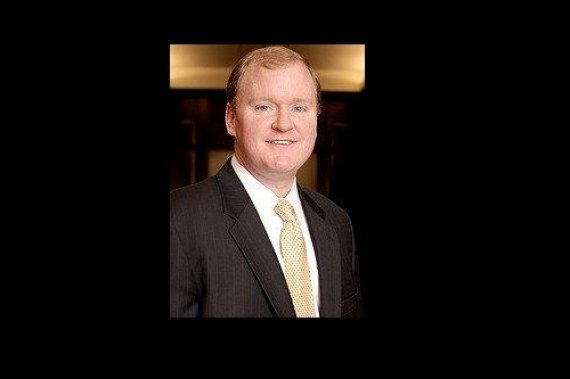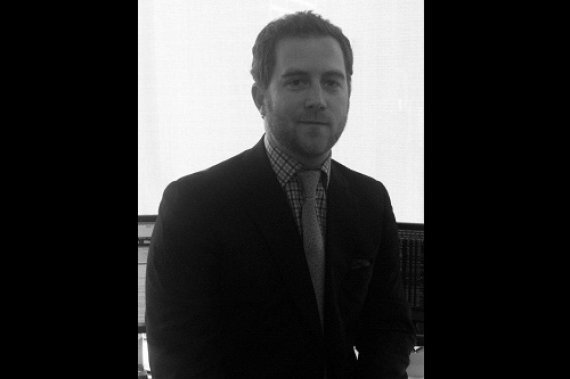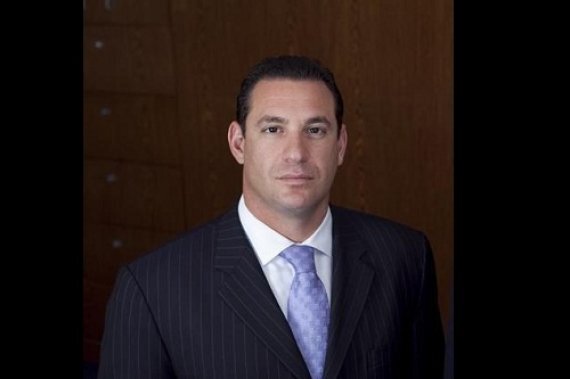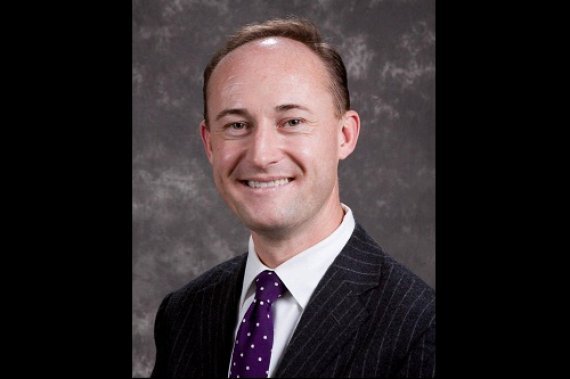
<p>No. 40: Matias Cohen</p>
Firm: UBS
Location: Miami, FL
Production: $2.69 million
AUM: $305.18 million
Age: 36
Matias Cohen serves a stable of clients who generally prefer to avoid risks. Most of his clients are overseas investors who have historically opted to invest in bonds, rather than equity.
This past year, however, the prevailing low-interest rates on bonds required Cohen to help his clients find other investments. He had to search for alternatives and then hold the hands of his clients who were tentative about making such changes in their asset portfolios. The searching and handholding tasks created some of Cohens biggest professional challenges of the year. Youve ended up taking more risks this year than you would in a normal year, Cohen says. He generated about 50 percent of his revenues from transactional charges and the other half from assets under management fees.
Despite expanding into new kinds of investments for his clients, Cohen remains confident about the future because of his faith in his long-time partners. For the past 15 years, Cohen has worked closely with the same two advisors. All three are natives of Argentina; all three are bilingual. The most important thing is that we work as a team, Cohen says. The three dedicate themselves to ultra-high net worth clients and divide tasks amongst themselves based on each of their separate skill setswithout letting their egos clash.

<p>No. 39: Thomas Anderson</p>
Firm: Morgan Stanley
Location: Cedar Rapids, IA
Production: $2.75 million
AUM: $300 million
Age: 38
As the lead portfolio manager on his team, Thomas Anderson espouses a somewhat unconventional economic outlook. With a passion for economic history and an MBA from the University of Chicago, he is convinced that the growth the markets have seen in the past 30 years wont repeat itself.
We know that the next 30 years cant look like our last 30 years, and we know that economic history teaches us a tremendous amount about how you want to invest during those cycles, Anderson says.
He decries a traditional 60/40 split between stocks and bonds and instead focuses on structuring portfolios around global investment opportunities and emerging markets. The problem, which he discovered when he returned home in 2000 to begin working with his mother, financial advisor Julianne Smith, and her $100 million book of business, was overcoming clients home-country bias.
Im a sixth generation Cedar Rapidian coming into my moms business, and Im like, Hey, we have a global opportunity set around us, he says. Convincing people to do something different than what they have been doing is a challenge.
It was also his mother who helped him master the relationship side of the business and educate clients on his more theoretical approach. She had been an English teacher before becoming an advisor and Anderson says one of her most important legacies was helping him simplify complex ideas.
You cant use [complex] terms to relate these ideas to individuals, he says. My mother taught me a lot about how to communicate and how to teach.

<p>No. 38: Butch Safyurtlu</p>
Firm: UBS
Location: Newport Beach, CA
Production: $2.79 million
AUM: $197.78 million
Age: 38
There is no easy type of prospect, but one sticks out to Butch Safyurtlu as being particularly challenging. An existing client had given him a lead on a Hollywood producer whose assistant stonewalled him, refusing to give him a meeting with her boss.
It was very, very difficult to get in front of him, Safyurtlu recalls. I had to do some investigating.
Safyurtlu found out that the assistant liked Pimms liqueur. Soon after, he arranged for a gourmet Pimms gift basket to be sent to her desk. Then she got me in front of him, he says.
Once he is in the door, Safyurtlu, educated as an attorney, focuses on providing all levels of tax and estate planning in addition to investment advice. Since he is not a practicing lawyer, he relies on a number of connections outside the firm to draft wills, trusts and contracts. His background also makes him more attuned to various property and casualty insurance needs that his clients might want to protect their assets.
Juries are awarding huge sums, so making sure the family is covered from a risk perspective is also very, very important, he says. The lawyer in me gets terrified.
Despite the wide range of services Safyurtlu relies on others to provide, he wont form a team with other advisors. He has two client associates, one of whom is a certified financial planner, and he prefers to run the show and remain the primary point of contact for his approximately 65 clients. He judges his relationships by whether a client would be excited to run into him at the airport with an hour and a half to spare before a flight.
How would they react? he asks himself. Thats one way to test yourself or at least consider how good your relationships are and how your clients think of you.

<p>No. 37: Justin Ryan</p>
Firm: UBS
Location: Atlanta, GA
Production: $2.86 million
AUM: $442.26 million
Age: 36
Justin Ryan thinks big, but not in the way many advisors do when it comes to growing their practices. The whole industry talks about scaling, but that is the absolute opposite of how I build my business, he says. Instead, Ryan customizes each clients portfolio, with no two identical. To keep that personalization manageable, he currently serves only about 30 clients, and has a cap on the number he will accept.
Ryans passion for individualized investments began early in his career, when he worked as a portfolio manager for Donaldson Lufkins and Jenrette. In that job, advisors regularly called him in to present to institutional clients, giving Ryan his first view of an advisors role.
Now, Ryan counts himself as both a financial advisor and a portfolio manager, running a customized fund of hedge funds for some clients, and regularly buying individual equities or bonds rather than relying on mutual funds. When he does work with outside managers, he has a strict policy that he must personally know him or her for at least a year before investing.
Our overarching mantra is that the markets overreact, so we try to have a cooler head than the next guy, Ryan says. And he has to. His clients include hedge fund portfolio managers, so if at any point they know more about the markets than I do, Im in trouble, he says.
As important as investments are, Ryan also tries to personalize the service side. He regularly travels cross-country to visit clients for both business and personal reasons, for example. The practice sends notes to clients and checks in on them by phone often enough that our clients think were nicest people in the world, and our back office thinks otherwise, Ryan jokes.

<p>No. 36: Sean Lannan</p>
Firm: Morgan Stanley
Location: Chicago, IL
Production: $2.89 million
AUM: $416.23 million
Age: 38
The retirement storm of the baby boomer generation is expected to send some 10,000 people into their golden years in the next decade, and Sean Lannan can already feel the wind beginning to blow. Weve already seen the momentum developing as a practice, he says.
Lannans team, the Hoffman-Eason-Lannan Retirement Planning Group, focuses on lifestyle planning to help clients reduce risk as they head into retirement. The group boasts a number of high-profile corporate executives in the Chicago region, and much of his work focuses on helping them exit the corporate world. That means diversifying and reducing risk, a lesson Lannan learned first-hand from witnessing volatility of technology stocks such as Lucent Technologies in the early 2000s.
Four or five years into my career, I was watching a company pretty much come unglued, he said. Where peoples 401(k)s hadnt been properly diversified, you had them coming to you with a fraction of the assets they had two years earlier.
Lannan personally helps the team - which has doubled its headcount in the past two years - get out in front of the retirement wave by taking on the responsibility for public speaking and seminar presentations. He regularly speaks on topics such as long-term care and estate planning. He also hires experts to do presentations on topics like the risk of decline in mental faculties and how to avoid ID theft.
When the baby boomers come into retirement theyre going to have a totally different set of challenges, Lannan says. And the fact that our group has been working exclusively in that space for over two decades gives us a unique advantage.

<p>No. 35: Michael Merlin</p>
Firm: Morgan Stanley
Location: Atlanta, GA
Production: $2.9 million
AUM: $650 million
Age: 38
Although he didnt know it at the time, one of most important tests of Michael Merlins career came when he was 23, after hed been in the industry only one year.
The nephew of one of his partners clients said he had only a couple hundred thousand dollars to invest, but asked Merlin if he would take a meeting. Merlin obliged, but when the potential client asked about specific investment strategies, Merlin demurred.
We really dont talk about investments until we understand more about the clients and their objectives and can build some sort of financial plan, Merlin remembers telling the prospect.
It turned out to be exactly what the client wanted to hear. Shortly after the meeting, the client called to apologize, saying that he really had about $4 million to invest, but he wanted to see if Merlin would take the meeting. The client said that he liked Merlins approach and would invest with him.
That was my first client, Merlin says. It was sort of a bait and switch, but in a good way.
Merlin now serves a number of ultra-wealthy business owners, and acts as the portfolio manager to build out proprietary strategies and funds for his clients. But a core part of his practice is still taking meetings with some of the younger entrepreneurs who may fall below traditional asset minimums.
Because of his age, Merlin can easily build a rapport and also understands what entrepreneurs are looking for. He creates podcasts on a variety of topics that would appeal to this group, like how to choose various kinds of insurance, and how to take a company public. Being there from the start with those clients pays off, he says.
Once their company goes public or they become the executive of a public company, everybody and his brother is all over them for their business, Merlin says. It really cements us as their strategic advisor.

<p>No. 34: Brian Bennett</p>
Firm: UBS
Location: New York, NY
Production: $2.92 million
AUM: $252.68 million
Age: 38
Brian Bennett likes to solve problems and meet goals. As a result, one of his key requirements for clients is that they accept his advice, a requirement that is not always fulfilled. When we speak to a potential client, we want to get a sense of whether they appreciate working with an advisor, or would rather do it themselves, he says.
Several years ago, Bennett met one of his biggest challenges: a clients father who had accumulated nearly $15 million in stocks and real estate over the course of his eight decades, but with no financial planning around the assets. The money was scattered across multiple accounts at different firms, and Bennett reckoned that the man considered him just one more fancy suit when he visited the familys Brooklyn home. But the gentleman was clear about his goal: he wanted his money to keep growing to its full potential so that his children would remember him well when he died.
Bennett immediately knew the solution. He consolidated the assets and engaged an estate attorney to restructure them into tax-efficient vehicles such as charitable remainder trusts. Absent such measures, he estimated 65% of the assets would go to taxes, leaving the mans children only a fraction of what he had accumulated. It seemed an obvious strategy, but to convince the client that it was the right course, Bennett said, he had to reiterate it many, many times.
The advisor finally prevailed. The man passed away shortly thereafter, but the mission was accomplished. Bennett says his four children will face no tax liability upon the death of their mother, getting the full value of what he has left. As a bonus, the original clients three siblings have all become clients, as well.

<p>No. 33: Andrew Ryan</p>
Firm: Deutsche Bank
Location: New York, NY
Production: $2.96 million
AUM: $1.265 billion
Age: 36
Andrew Ryan started in the financial advisory world as a research assistant in San Francisco during the dot.com bubble. Eventually, he moved up to an advisory role after he relocated to New York with his girlfriend, who became his wife. But the time he spent on the West Coast assisting other financial advisors who served newly minted moguls left an imprint on Ryan that persists to this day.
Most of Ryans client roster includes ultra-high net worth individuals who are entrepreneurs and have their holdings concentrated in equity in companies that they helped create. His role is to help those clients manage their assets for tax and liquidity purposes. In the past year, hes handled a tremendous number of client wealth events, mostly initial public offerings. The IPO market, he says, has been on a tear. For his clients, the trend means picking the right time to seek liquidity. Thats why Ryan emphasizes client service and his teams availability. A lot of people have been waiting for the big pullback, he says. For Ryan and his clients, who have much to gain or lose from any market activity, constant vigilance is required. You have to stay in touch with all the market moves, he says.

<p>No. 32 Allen Saunders</p>
Firm: UBS
Location: New York, NY
Production: $2.98 million
AUM: $641.43 million
Age: 37
Managing money to a clients risk tolerance is a key tenet of Allen Saunders investment focus, and he uses a detailed process to assess that tolerance. These days, however, conversations about risk tolerance are likely to include a new component: educating the client about the evolving definition of risk.
Fixed income is one of the most obvious areas where things are changing. Weve had conversations with people who thought they were very conservative, but its a new world right now, Saunders says. To manage that risk, Saunders is using bonds with very short durations a strategy that he says has created gains for his bond portfolio this year but he is also counseling clients to include more equities in their asset mix. His approach is to create predictable, repeatable results, and one way you can get there is through dividend payers that have a history of increasing their dividend rates, he says.
Insurance is another area that has been ripe for risk reviews and education. Many people own policies bought from friends or neighbors that provide income replacement, but dont realize that as their net worth grows, those policies dont make sense, says Saunders. Instead, clients may need protection against estate taxes, a factor that can be way more important than investment returns in the long run.
Planning became even more important in the bullish environment of 2013, Saunders believes. Some clients may want to focus just on returns. We want to remind them about risk management.

<p>No. 31: Daniel Fries</p>
Firm: Merrill Lynch
Location: Chicago, IL
Production: $3.005 million
AUM: $425.71 million
Age: 37
Daniel Fries got his start in finance at an earlier age than most. Throughout college, he worked full-time at First Chicago Bank, rising from teller to jobs in lending, mortgages and commercial banking. Through a series of mergers and acquisitions, he found himself at Merrill, where his banking background continues to inform his practice serving numerous "preeminent banking clients," he says.
Fries began his advisory practice by cold calling "centers of influence" in Chicago, talking to bankers and garnering referrals. He found that those potential clients might have been well served on the banking front, but were more or less on their own in terms of planning and investing. Fries has developed his practice in response to the mounting complexities of the financial world and the corresponding uptick in the level of service affluent investors expect from their advisors.
I strive to be the absolute most trusted partner in a client's life," Fries says. "Our job as an industry is extraordinarily important because the pressures that clients feel now and the concerns they have are as much as they've been at any point in my career."
In that spirit, Fries has assembled a team of specialists, and organized his practice around a seven-point structure. That comprehensive approach aims to help clients -- and their families -- in the areas of financial guidance, legacy implementation, estate coordination, risk and debt management, retirement lifestyle continuation, tax minimization and transition counseling.





